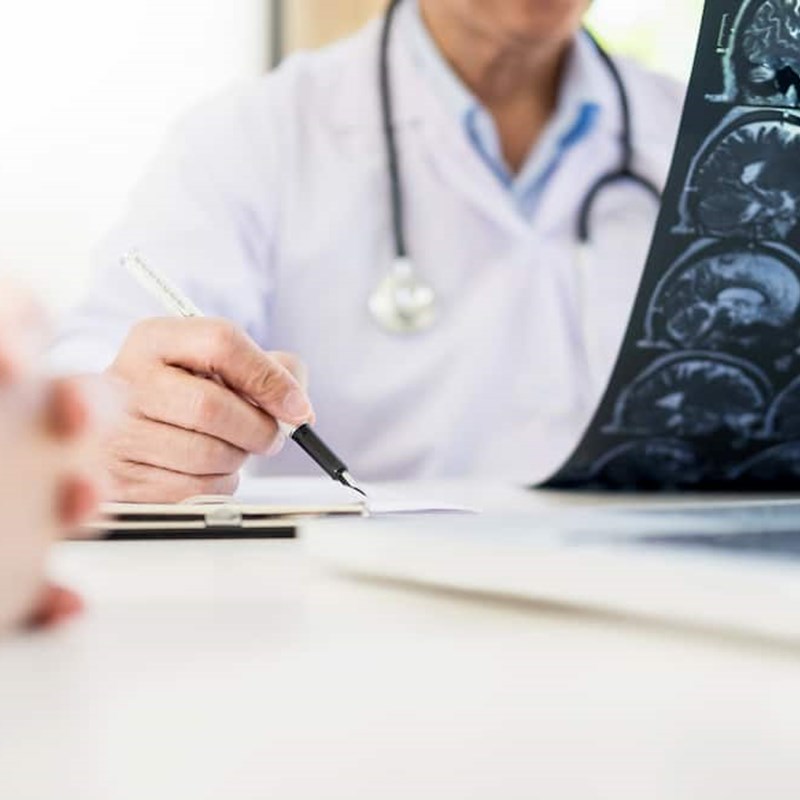Whiplash-associated disorders can cause pain but equally so, sometimes don’t cause any pain at all. In most cases when the neck is sore, the discomfort will stay around the neck, but sometimes may travel to the shoulder blade and even to the arm. This is called ‘referred pain’ which in other words means that the pain is travelling away from the neck. Pain when turning your head, looking down or simply holding your head up is common.
Whiplash

This page has been designed to provide you with the right information about whiplash-associated disorders and how to manage them from a physiotherapy point of view.
What are whiplash-associated disorders?
The term whiplash-associated disorder is a term used to describe injuries caused by a sudden acceleration-deceleration movement and is most commonly associated with road traffic incidents.
You may know the condition simply as ‘whiplash’ but this only relates to injury mechanism and not the symptoms that may be associated with it.

What does an ‘acceleration-deceleration’ movement mean?
An acceleration-deceleration movement relates to any movement involving a rapid speeding up followed by a rapid slowing down of a body part. It is most commonly associated with injuries to the neck and typically will follow a road traffic incident, although falls and sporting injuries can cause similar issues.
For the purpose of this information page, the details will focus on whiplash-associated disorders associated with road traffic incidents (RCI).
I think I’ve got whiplash but how do I know?
Firstly, it’s important to know that your neck is unbelievably strong, robust and actually really quite difficult to damage. It doesn’t mean that it can’t get sore from time to time, but it does mean that it is capable of having an injury, such as an RCI and not being actually damaged (i.e. broken bones).
If you have had an injury to your neck, such as an RCI, and you are feeling symptoms such as soreness, stiffness or headaches since the injury, then you may have a whiplash-associated disorder.

What are the common symptoms of whiplash-associated disorders?
This is a really important question and it is useful for you to know what is normal for necks affected by whiplash-associated disorders. We’ve broken the answer down into things that are found most commonly:
Are there any other symptoms that can happen with a whiplash-associated disorder?
There are a number of other symptoms that are linked with whiplash-associated disorders but these tend to be less common:
Should I go to Accident and Emergency?
If you have had a road traffic incident and are experiencing neck pain or any other type of pains or distress following the incident that are causing you concern, you may want to talk with a healthcare professional about what action you should take. It is hoped that the information on this page may help you with this however, talking to your physio, GP or calling 111 is normally enough for most people.
If you have major concerns about your health, you should seek help from A&E or call 999.
How are whiplash-associated disorders diagnosed?
In most cases, whiplash-associated disorders can be diagnosed through the clinical features (what it looks like and how it behaves), your symptoms (what you tell us about your neck) and the clinical assessment (testing the movements etc.). An X-ray of the neck can be used to help exclude certain issues but they are not always required.
Why are X-rays/scans not always required?
In a lot of cases, the information we as healthcare professionals can get from asking you questions and testing the neck is enough to make a decision. X-rays are a very useful tool (and would always be ordered if needed) as they show you what your neck looks like on the inside, however, in some cases what your neck looks like on the inside doesn’t really marry up with what your problem might be.
There is growing evidence (experiments and clinical studies) that demonstrate what you see is not always what you get with X-rays and scans, and that a lot of the so-called ‘worn out’ or ‘abnormal’ findings are seen commonly in people with no pain, stiffness or symptoms.
In a large study of over 1200 people, Nakashima et al. (2015) demonstrated that most of the common ‘problems’ found in neck scans, including disk changes, are seen as much and sometimes more, in people WITHOUT any pain, stiffness or symptoms as those with symptoms.
What this means is that what you say about your neck issue, how you move and how you feel etc. are often more important than the results of an X-ray or scan.

Are there different types of whiplash-associated disorders?
Yes, and there are many factors that might influence the type of issue you may get.
Given that we as people are all different, it might not come as a surprise that we can all react differently to the same incident or injury.
Not every road traffic incident will result in whiplash-associated disorders. Lots of things can play a part in whether you develop issues after the accident or not. These include things like the speed and direction of the collision; whether you were expecting the impact (i.e. you saw it coming); whether you were wearing a seatbelt or if the airbags were deployed.
Interestingly, less obvious things may also have an influence on whether you develop issues or not such as how you were feeling on that day (i.e. happy and confident vs low in mood or stressed); whether you have had a previous neck issue or pre-existing health issues.
The grades of whiplash-associated disorders are as follows:
No neck pain and no physical signs.
Symptoms may include neck pain, stiffness or tenderness but these are difficult to reproduce with physical (moving and touching) assessment.
a) Symptoms may include neck pain, stiffness or tenderness with reduced neck movements. Neck movements may be painful and may have sensory (feeling) changes.
b) Symptoms may include neck pain, stiffness or tenderness with reduced neck movements. Neck movements may be painful, may have sensory (feeling) changes and elevated emotional distress.
c) Symptoms may include neck pain, stiffness or tenderness with reduced neck movements. Neck movements may be painful, may have sensory (feeling) changes, elevated emotional distress and generally increased nervous system sensitivity.
Symptoms may include neck pain, stiffness or tenderness with reduced neck movements. Neck movements may be painful, may have sensory (feeling) changes, elevated emotional distress, generally increased nervous system sensitivity and neurological signs (these include changes in sensation or feeling, muscle weakness and/ or reduced deep tendon reflexes).
Symptoms may include all of the above and the patient shows a fracture or dislocation.
Adapted from: Sterling, M. (2004). A proposed new classification system for Whiplash associated disorders – implications for assessment and management. Musculoskeletal Science and Practice, 9(2) 60-70.
Does it matter what grade mine is?
The exact ‘type’ of whiplash-associated disorder you may be suffering with shouldn’t mean too much to you as it is more to help guide your physiotherapist/ GP on the most appropriate direction for treatment. As you may be able to gather, different ‘types’ of whiplash-associated disorders may benefit from different treatment approaches and as such, there are no quick and easy recipes for success with all neck issues. Regardless of the grade, some people will recover quickly and effectively and some may take more time and require more help.
What can I do to help myself?
Reassuringly, there are lots of things that you can do to help get your neck going and start your rehabilitation.
What can physiotherapy do for me?
Physiotherapy for neck complaints including whiplash-associated disorders can be very effective. We offer a range of options to help you manage your complaint with exercise, education and lifestyle advice/coaching forming the main part of what we can offer you. We are able to offer other treatments including manual therapy and acupuncture if deemed appropriate, however these would only likely be offered alongside the exercise, education and lifestyle advice.
Is there anything I should look out for?
In most cases, neck symptoms associated with whiplash-associated disorders are easily recognised, but occasionally there are things that do not fit and should be highlighted to your doctor, nurse or physio.
The following symptoms would be considered rare with whiplash-associated disorders and if you develop any of the following you should seek medical attention urgently.
Will it get better?
In a lot of cases, it is very much possible for you to improve the symptoms you have with your neck. Obviously, it is impossible to predict the timescale or the path your recovery will take but encouragingly, with normal confident movement, increased physical and emotional fitness and resilience (if needed), most people will find that their symptoms can change for the better.
How long will it take before I feel something?
This is a very difficult question, but it is best to think about how much time and effort you are going to throw at the challenge and how confident and motivated you are to do something about it. If you work hard and are consistent with what you do, often people will notice signs of positive response within weeks to months. If you are not committed to the challenge it will take longer or may not respond at all.
Frequently asked questions
Q: Should I use a collar or a support for my neck?
A: Collars and supports for neck pain are no longer recommended. It used to be that collars were issued by physios for neck issues, however we now understand that these can actually make things worse as keeping your neck still will not support normal movement - it will cause strength loss and may make you feel worried about moving your neck when the support comes off.
A: Acupuncture is something that can help some people, however not everyone benefits from it. Acupuncture is best thought of as a type of pain relief and as such, it might help ease the pain temporarily but will probably do very little to address the reason why your neck is sore in the first place. Working on normal confident movement and the strength of your neck is likely to help most people.
Q: Could my posture be part of the issue?
A: Interestingly, this is not as clear as some people might have you believe. In a study by Gamkhar & Kahlaee (2018), no significant link between head and neck posture in pain could be found in people with and without neck pain, however muscle size was significantly smaller in people with neck pain. In other words, it doesn’t really matter what your posture is like but things like your strength, fitness and confidence in your neck and how well you manage things like stress seem to matter.
Q: I don’t have any weights at home, how am I supposed to do the exercises?
A: This doesn’t matter. Most, if not all, of the exercises below can be modified or adapted using heavy bags, bottles of water or even books.
Q: Are the exercises going to be sore?
A: If your neck is sore to begin with, then it is normal to expect that starting some exercises might be a bit sore to start with. As you get better and start to tolerate the exercises better, you should find that they are more comfortable, however it is worth knowing that strengthening exercises are meant to be hard work (and a bit sore), so if they’ve become too easy perhaps you need to increase the challenge.
Q: My neck is worse when I do a certain something (e.g. looking to the left), should I still do it?
A: The pain in your neck is not an indication of damage, therefore it is safe to move your neck normally. If something is really sore, it makes sense not to force it and work within a range that is comfortable, but it is safe to be sore.
Q: Are exercises the only things I can do?
A: Quite simply, no! The exercises will help get you moving and hopefully help with your strength, which are both important for helping neck pain. However, often looking at the things that your neck doesn’t like, such as sitting for long periods/ carrying shopping and making some changes/ adaptations to those things will help the exercises be more effective.
A: If you are not having issues with your sleep then changing your pillow isn’t likely to help. If you are having issues, first think about what changes/ effort you're putting into controlling your neck during the day as this is likely to be most effective. If you want to change your pillow and think it will help, then choose the one that is most comfortable. There isn’t a ‘best’ pillow as we all have different needs and preferences.
Q: What happens if I do all this and it just doesn’t get better?
A: Firstly, ask yourself if you have really done everything you can to try and move your neck issue forwards. If the answer is no, consider re-reading the information above and seeking some guidance from your physio.
If you have really committed to your rehabilitation and still don’t find any benefit, then please bring this up with your physio who will be able to discuss your options.
Exercise tips:
For movement exercises, aim to complete the exercises little and often throughout the day within what is comfortable.
For strengthening, you may choose to start by simply completing the exercises until your neck gets tired for 3-4 sets with about a minute’s rest in between sets. If you want more structure, try completing 8-12 repetitions for 3-4 sets, with about a minute’s rest in between sets. Complete these exercises every other day.
Movement Exercises
Strengthening Exercises
References:
de Zoete R, M, J. , Armfield N, R., McAuley J, H., Chen, K. and Sterling, M. (2019). Comparative effectiveness of physical exercise interventions for chronic non-specific neck pain: a systematic review with network meta-analysis of 40 randomised controlled trials. European Journal of Physiotherapy http://dx.doi.org/10.1136/bjsports-2020-102664 (accessed 26/01/2021).
Gamkhar, L. and Kahlaee. (2018). Is forward head posture relevant to cervical muscles and performance and neck pain? A case-control study. Brazilian Journal of Physical Therapy, 23(4) 346-354 doi: 10.1016/j.bjpt.2018.08.007. Epub 2018 Aug 22 (accessed 29/01/2021).
Nakashima, H., Yasutsugu, Y., Suda, K., Yamagata, M., Ueta, T. and Kato, F. (2015). Abnormal findings on magnetic resonance images of the cervical spines in 1211 asymptomatic subjects. Spine, 40(6):392-8. doi: 10.1097/BRS.0000000000000775 (accessed 26/01/2021).
Sterling, M. (2004). A proposed new classification system for Whiplash associated disorders – implications for assessment and management. Musculoskeletal Science and Practice, 9(2) 60-70.























